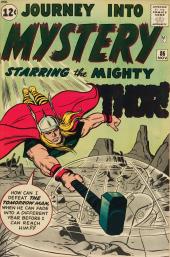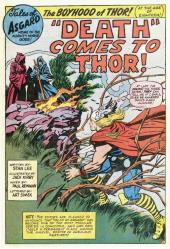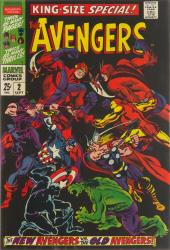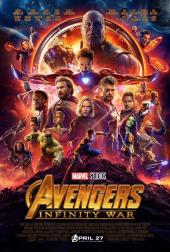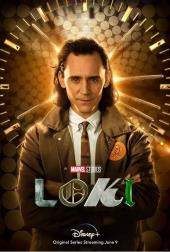Comic Book
On the Trail of the Tomorrow Man
- by Stan Lee and Jack Kirby
- Journey into Mystery #86 (Marvel Comics, November 1962)
Zarrko, a mad time-machine-building scientist from 2262, believes that our nuclear weapons will enable him to take over the world of his time. He comes back to 1962 to steal one, and the Mighty Thor pursues him back to 2262.
The plot suffers from Alpha Centauri syndrome, where the time traveler might as well be from Alpha Centauri as from the future, but seeing the emergence of Kirby’s high-perspective artwork gives this issue a boost. In addition, the story provides a powerful image of the pre-Vietnam cold war era and its prevailing assumptions about the roles of women in society. —Michael Main
The plot suffers from Alpha Centauri syndrome, where the time traveler might as well be from Alpha Centauri as from the future, but seeing the emergence of Kirby’s high-perspective artwork gives this issue a boost. In addition, the story provides a powerful image of the pre-Vietnam cold war era and its prevailing assumptions about the roles of women in society. —Michael Main
Ahhh—an ancient explosion of a nuclear bomb! The perfect device with which to conquer the twenty-third century!

